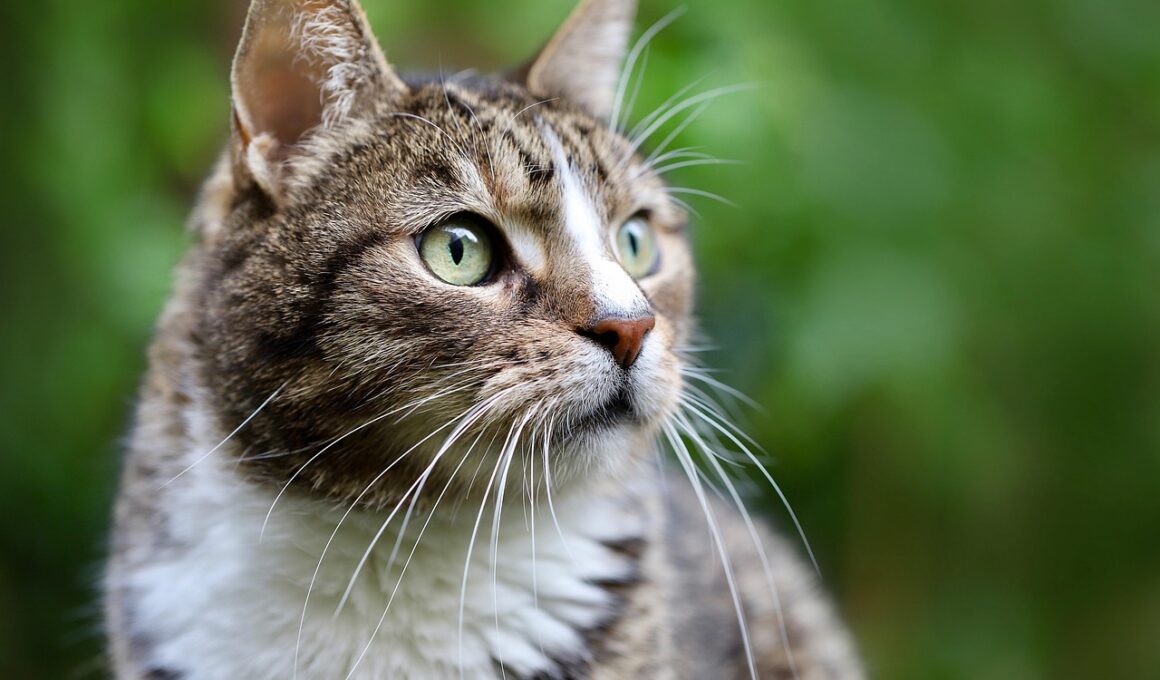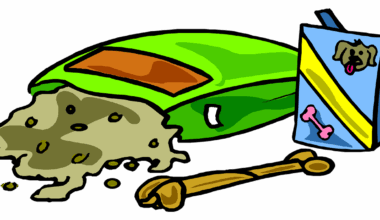Recognizing the Signs of Choking in Cats: A Quick Guide
Cats are curious creatures, often exploring their surroundings with their mouths. Choking can be a serious hazard for our feline friends. Knowing the warning signs is crucial for pet owners. One early indication a cat may be choking is coughing, which usually indicates that there is an obstruction. If your cat starts to cough or gag, it is vital to remain calm and observe the situation carefully. Furthermore, if you notice your cat pawing frantically at its mouth, it may be attempting to dislodge the item causing discomfort. You should also watch for unusual behavior such as restlessness or excessive drooling, which can signal distress in your cat. If your cat suddenly becomes quiet or unresponsive, it’s time to act quickly. Quick action can save your pet’s life! If you suspect choking, it’s best to assess the situation and either remove the obstruction or seek immediate help from a veterinarian. Always have the contact number of an emergency vet handy, as swift responses can significantly impact your cat’s safety in such scenarios.
Prevention is key when it comes to keeping your feline safe from choking hazards. Regularly inspect and remove potential dangers within your home and outdoor spaces ensures peace of mind. A common choking hazard includes small toys or household items like rubber bands, string, or paper clips; thus, these should be kept out of reach. To keep your kitty safe, consider investing in cat toys that are specifically designed to be safe and appropriate for your pet’s size. It’s also advisable to supervise playtime, especially with new toys, to ensure they’re suitable for your cat. Additionally, be cautious about the types of treats you provide your feline. Avoid small-sized treats that could pose a choking risk. Instead, opt for larger, softer treats that can be easily chewed and swallowed. Finally, familiarize yourself with common household plants that pose a poisoning risk. Be vigilant and reduce your cat’s exposure to anything that might contribute to choking. Ultimately, a proactive approach significantly minimizes any choking risk for cats, allowing for a more enjoyable and safe environment for your beloved pet.
What to Do If Your Cat Is Choking
The immediate response to a choking incident can greatly influence the outcome. When you notice signs that your cat might be choking, do not panic; remain calm and assess the situation clearly. If your cat is coughing or gagging but can still breathe and make noise, it’s best to allow them the chance to dislodge the object on their own. However, if your cat is unable to breathe, has turned blue, or is unresponsive, immediate intervention is necessary. An important first step is to check the mouth for visible obstructions. If you can see an item, you might be able to reach in and gently remove it. Be cautious with this approach, as you don’t want to push the item further down. If you can’t see anything or if they are still choking, consider performing the Heimlich maneuver designed for cats. Place your hands just under their ribcage and give a quick thrust upward toward their chest. Always consult with a vet afterwards to ensure your cat is fine, as internal injuries may have occurred.
In some cases, preventing choking in cats may require lifestyle changes. For instance, if your cat is known for chewing on items, consider providing safe alternatives for chewing, such as dental chews or toys designed for this purpose. Ensuring that your cat has appropriate mental and physical stimulation can also reduce undesirable behaviors. Regular playtime can keep your cat engaged in positive activities, reducing the chance they will chew on harmful objects. Training can be useful too; teaching commands such as “leave it” can discourage your cat from exploring potentially dangerous items. Additionally, consider cat-proofing your home by putting away any small objects or loose wires. Using bins with tight-fitting lids can also help store small items that could pose a choking hazard. It’s essential to create a safe environment for your furry friends, as their inquisitive nature often gets the best of them. By taking precautions and being proactive about their safety, you’ll significantly reduce the risk of choking hazards in your home.
Signs of Choking in Cats
Understanding the signs of choking in cats is critical for every cat owner. Observing the behavior of your feline when they are playing or eating can reveal much about their safety. Signs include obvious distress, such as panic, quick, labored breathing, or pawing at the mouth. If your cat is visibly struggling, it’s crucial to intervene promptly. Unusual vocalization may also be an indicator of choking; your cat might meow differently or make unusual sounds due to their discomfort. Furthermore, watch closely for excessive drooling, which can point to a serious problem. If a cat is experiencing choking, they may also lower their head and assume an awkward posture. Taking note of such behaviors can help you assess the situation quickly. Don’t ignore these signs, as they may escalate and can lead to critical consequences if not addressed swiftly. Establishing regular check-ins on your cat, especially during playtime or meal times, can make a significant difference. Being proactive and vigilant about their safety cannot be overstated when caring for your beloved pets.
In addition to recognizing signs of choking, it is crucial to familiarize yourself with your cat’s individual behaviors. Each cat has its own personality and comfort levels when interacting with toys, food, or their environment. Pay attention to the specific items your cat usually plays with or ingests. Watching how they interact with these items can provide insights into potential choking hazards unique to your pet. For example, certain cats may be more prone to chewing on objects while exploring. Knowing your cat’s habits can help you identify any pressuring dangers that might not seem apparent at first. Additionally, consult your veterinarian about suitable toys and treats for your cat’s breed and lifestyle. Professional guidance can assist you in selecting safe products, reducing your pet’s risks further. Always remember to rotate toys regularly, ensuring stimulation and keeping your cat engaged with safe, approved items. Staying informed about their habits and preferences plays an essential role in safeguarding their health. Combine your observations with professional advice for the ultimate approach to preventing choking hazards for your cats.
Emergency Response to Choking
Building confidence in your ability to respond effectively during a choking emergency can make a significant difference. Practice what to do when your cat is choking, as it can help you react quickly in stressful situations. Familiarizing yourself with emergency processes can enable prompt intervention if necessary. Keeping emergency contacts easily accessible is vital; compile a list of your regular veterinarian and the nearest emergency animal hospital in case of an urgent situation. Be prepared to inform the vet about the nature of the incident; they will need to understand your cat’s condition and any visible symptoms. Gathering essential materials such as gauze or a small flashlight can also assist in navigating the situation more effectively, especially if it happens at night. Practice techniques safely with a stuffed animal or a trusted friend to feel more confident in real-life situations. Lastly, consider taking a pet CPR and first aid class to equip yourself with the knowledge required to handle choking and other emergencies. Completing these steps can bolster your confidence and ensure that your cat receives the best possible care when facing choking incidents.
Remember that prevention is the most effective strategy when it comes to choking hazards in cats. Regularly engaging with your cat fosters positive interactions while allowing you to keep an eye on their behaviors. Recognizing warning signs and acting quickly can make all the difference in an emergency. Using safe toys and materials creates a secure environment where mischief can be minimized while providing mental stimulation. Additionally, using feeding practices that discourage fast eating can also prevent choking incidents. Consider using slow feeders or puzzle toys during meal times, which can encourage more cautious eating behaviors. Furthermore, being knowledgeable about the safe items for your feline can considerably lower choking risks. Always strive to educate yourself regarding pet safety, whether for health or behavioral concerns. Staying informed not only protects your cat but also enhances your relationship with them. Don’t hesitate to discuss any concerns with your veterinarian. Engaging in dialogue about your cat’s behavior with a professional can provide valuable insights into their overall safety and health. Ultimately, the key to ensuring your cat’s well-being is a mix of proactive prevention and immediate responsiveness.


